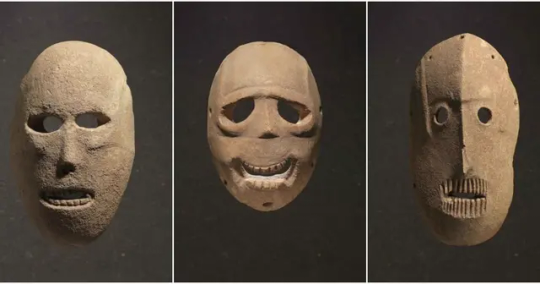#judeans
Text


Rogudean Jackback Riders Lineart
#Rogudeans#rogudean#jewish history#jewish#rabbit#roger rabbit#who framed roger rabbit#jessica rabbit#ancient history#ancient civilizations#hebrew hares#hebrew#isrealites#judeans#judea#jews#wfrr
4 notes
·
View notes
Text

A Tale of Two Coins - 2000 years apart!
On the right is a Judea Capta coin from 71 AD, 1952 years ago. The coin says “Judea conquered" in latin. These were commemorative coins originally issued by the Roman Emperor Vespasian to commemorate the capture of Judea and the destruction of the Jewish Second Temple by his son Titus in 70 CE during the First Jewish Revolt. On one side of the palm tree is a weeping defeated Jewish woman. On the other a victorious Roman soldier.
On the left, we see the same palm tree representing the Jewish homeland, but instead of a Roman soldier, there is a Jewish woman holding a baby up to the heavens symbolizing the rebirth of the Jewish people like a phoenix out of the ashes. In place of the weeping woman is a Jewish farmer (her husband) planting new roots for the Jewish people in the Jewish homeland. Instead of “Judea Capta'' the words read - “Israel Liberated 1948″.
These two coins sum up the history of exile and return of the indigenous Jews to the Kingdom of Israel.
In the prophetic words of the Bible: “They who sow in tears shall reap in joy.” (Psalm 126)
#secular-jew#israel#jewish#judaism#israeli#jerusalem#diaspora#secular jew#secularjew#islam#coins#ancient coins#judean coinage#judea#samaria#romans#judea capta#vespasian#titus#emperor#roman empire#Israel liberated#1948#hamas#coinage#second temple#1st century#palestine#Palestinian#gaza
366 notes
·
View notes
Text
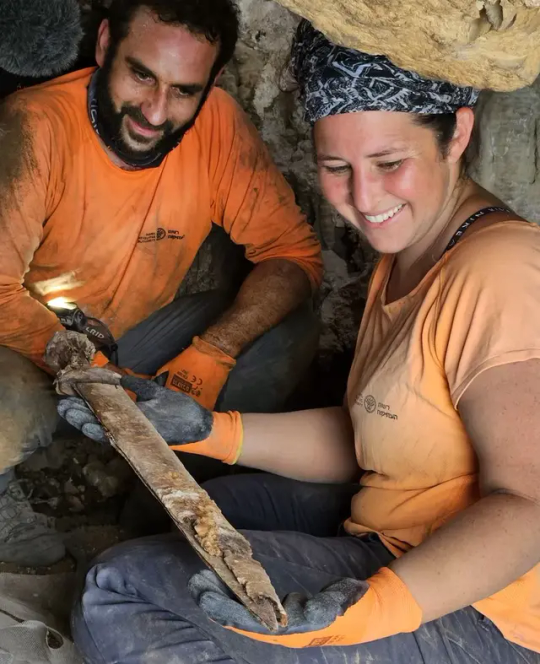

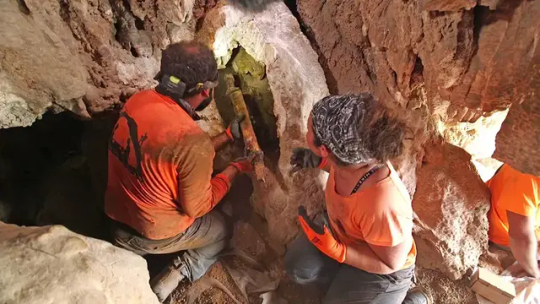
Four 1,900-Year-Old Roman Swords Found in a Judean Desert Cave
Apparently stolen by Jewish rebels, the incredibly well-preserved weapons are ‘an extremely rare find, the likes of which have never been found in Israel’
Archaeologists have discovered four 1,900-year-old Roman swords in a cave in the Judean Desert, which experts believe were captured by the Judean rebels during the Bar Kochba revolt and placed in a narrow crevice in the rock.
“We’re talking about an extremely rare find, the likes of which have never been found in Israel,” Dr. Eitan Klein, one of the directors of the Israel Antiquities Authority’s Judean Desert Survey, said in a video accompanying the announcement of the discovery. “Four swords amazingly preserved, including the fine condition of the metal, the handles, and the scabbards.”
The preliminary article on the swords is published in the volume “New Studies in the Archaeology of the Judean Desert: Collected Papers,” which explores new archaeological finds discovered in the Judean Desert Survey Project. A conference launching the book is taking place Wednesday in Jerusalem.
The four swords were discovered shoved into a small fissure in a cave near Ein Gedi National Park, near the Dead Sea. The cave is already well-known to archaeologists, as it contains a stalactite with a fragmentary ink inscription written in ancient Hebrew script characteristic of the First Temple period.
Recently, Dr. Asaf Gayer of Ariel University, geologist Boaz Langford of Hebrew University, and Israel Antiquities Authority photographer Shai Halevi returned to the cave to photograph the stalactite with multispectral photography, which can decipher additional parts of the inscription not visible to the naked eye. While inside the cave, Gayer spotted an extremely well-preserved Roman pilum — a shafted weapon — in a deep, narrow crack in the rock. He also found pieces of carved wood in an adjacent niche that turned out to be parts of the swords’ scabbards.
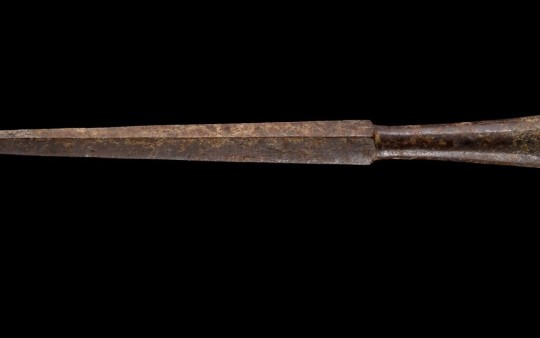
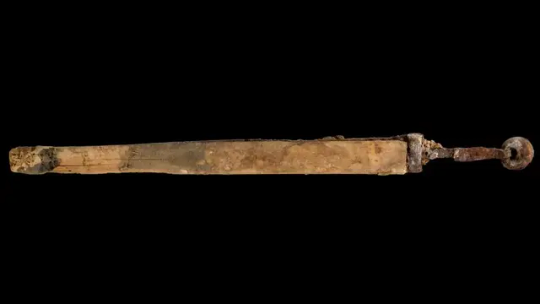



The researchers reported the find to the Israel Antiquities Authority and returned to the site with the Judean Desert Archaeological Survey Team, which is conducting a multi-year comprehensive survey of more than 800 caves in the Judean Desert to find and preserve archaeological remains before they are looted.
It was then that they discovered the four swords, three of which were found with the blades still inside their scabbards. Researchers also found ornate handles made of wood and metal with leather strips nearby. The arid climate in the Judean Desert helps preserve fragile artifacts that might otherwise be lost to the ravages of time, including materials such as leather and wood, which are rarely found in wetter parts of the country.
Three of the swords are Roman spatha swords, with blades 60 to 65 centimeters (23.5 to 25.5 inches) long. The fourth weapon, a ring-pommel sword, is shorter, with a 45-centimeter (18-inch) blade. The swords likely belonged to Roman soldiers and were stolen by Judean rebels who hid them in a cave either for later use or to avoid being caught with them.
“The blades have been preserved so well, they look like they could be picked up and used right now, even 2,000 years after they were forged,” said Langford. “You just realize that you are touching history, because here you are touching a find whose story you know.”
The Bar Kochba revolt, from 132 to 135 CE, also called the Second Jewish Revolt, was a Jewish rebellion against Roman rule in Judea led by rebel leader Simon Bar Kochba. Archaeologists believe the swords were likely hidden in the crevices inside the cave sometime during the revolt, as it was dangerous for Jews to be found with Roman weapons.
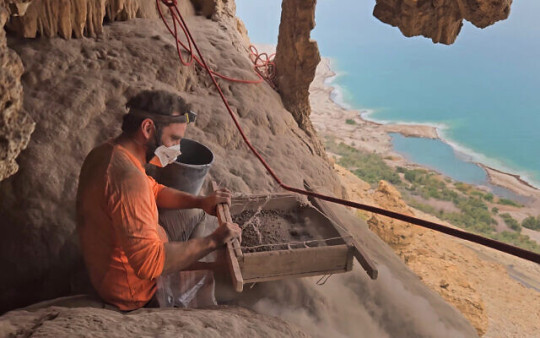
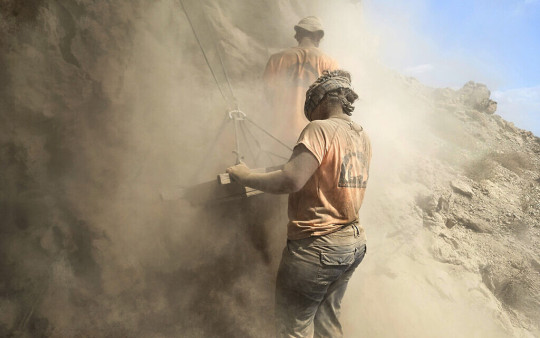
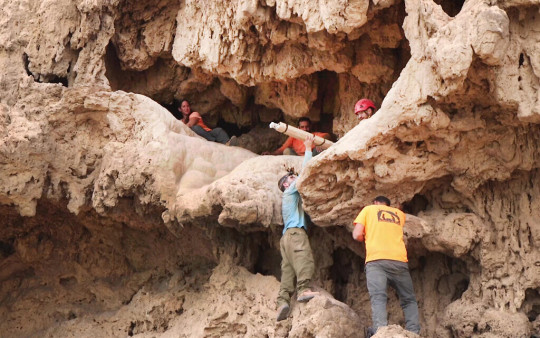
“This is a very rare and unique find on an international level that will shed light on the last moments of the war between the Jewish rebels and the Roman army at the time of the Bar Kochba revolt,” said Klein.
‘A unique time capsule’
The cave survey is being undertaken by the IAA in cooperation with the Archaeology Department of the Civil Administration in Judea and Samaria, and has been funded in part by the Ministry of Jerusalem Affairs and Heritage. Each body allocated about a third of the project budget.
Earlier this year, archaeologists carrying out the Judean Desert cave surveys discovered a rare half-shekel coin minted by the Bar Kochba underground economy.
The cave survey started in 2017 and helped archaeologists discover at least 20 new caves they had not previously known. In 2021, archaeologists announced that one of the caves contained previously undiscovered fragments of the Dead Sea Scrolls, some 60 years after the last pieces of the Dead Sea Scrolls were discovered.

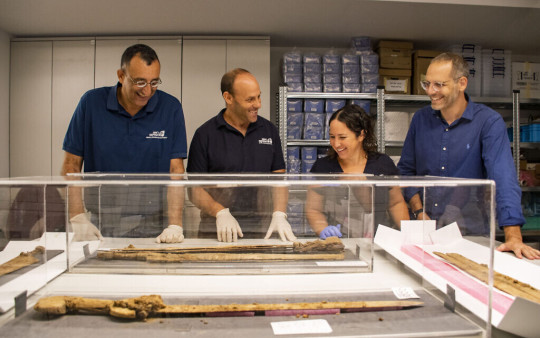
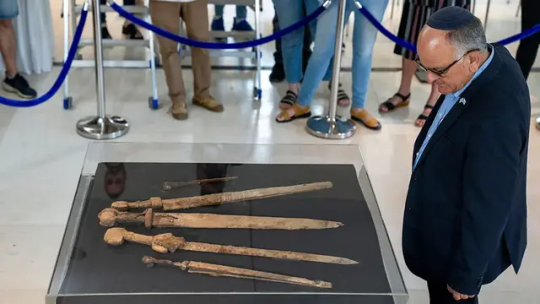
Following the discovery of the swords, archaeologists carried out an extensive excavation of the cave, discovering artifacts from the Chalcolithic period (around 6,000 years ago) and the Roman period (around 2,000 years ago). At the entrance to the cave, researchers found a Bar Kochba bronze coin from the time of the revolt that could help pinpoint the dates when the weapons were hidden.
“This is a dramatic and exciting discovery, touching on a specific moment in time,” said Eli Escusido, director of the Israel Antiquities Authority.
Noting that not all are aware that the dry climatic conditions in the Judean Desert enable the preservation of artifacts that do not survive in other parts of the country, Escusido called the area a “unique time capsule” where it is possible to find “fragments of scrolls, coins from the Jewish Revolt, leather sandals — and now even swords in their scabbards, sharp as if they had only just been hidden away today.”
By Melanie Lidman.
#Four 1900-Year-Old Roman Swords Found in a Judean Desert Cave#Ein Gedi National Park#Judean Desert Survey#Dead Sea#Bar Kochba revolt#roman swords#roman weapons#ancient artifacts#archeology#archeolgst#history#history news#ancient history#ancient culture#ancient civilizations#roman history#roman empire#ancient Israel#Israel history#long reads
349 notes
·
View notes
Text


#israel#palestine#hoes mad they commited ethnic cleansing and r now enjoying its juicy fruits#and that they cannot pull out a single 'palestinian artifact' from the ground#but judean and israeli artifacts hide in every nook and cranny of the soil#sorry tamarrud but this has to be ur biggest L yet!
104 notes
·
View notes
Text
Pinchas ben Paltiel, a teenage Judean in King David's militia that got bit by the spider that saved David's life and now Pinchas has spider powers, is that something?
147 notes
·
View notes
Text
I love the idea of people leaving things in caves for safekeeping and then just never returning or never being able to return.
83 notes
·
View notes
Text
The Judean Date Palm, which once covered much of Israel was extinct by the Middle Ages. Amazingly, in 2005 a team of scientists managed to resurrect this once prized tree.
78 notes
·
View notes
Text

M A S A D A
143 notes
·
View notes
Text
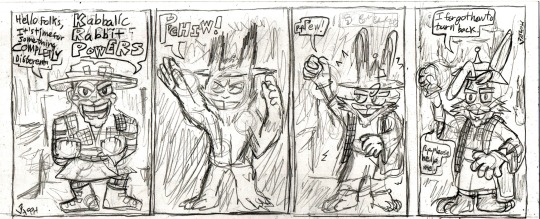
Now for something completely different
#he bro#wonder showzen#chris chan#sonichu#rogudean#roger rabbit#jewish history#judeans#vinluv#vinluv Anton Handesbukia#comic strip#comic#tf#transformation
2 notes
·
View notes
Text
if your activism consists of protesting outside a cancer treatment center and disrupting a memorial for victims of a mass shooting i’m not inclined to believe you care about your cause so much as you care about getting attention and harassing whoever you deem immoral
#protesting MSK was not on the bingo card but here we are#and neither was demanding a ceasefire from biden by interrupting his speech at Mother Emanuel AME#ya know.#the church where nine people were murdered in a white supremacist mass shooting#the deadliest mass shooting in SC history#im not convinced y’all 1. care about palestinians or 2. know anything about Judean-Israeli-Palestinian history#i’m not convinced you care to know either#antisemitism#judeophobia#leftist antisemitism
22 notes
·
View notes
Text
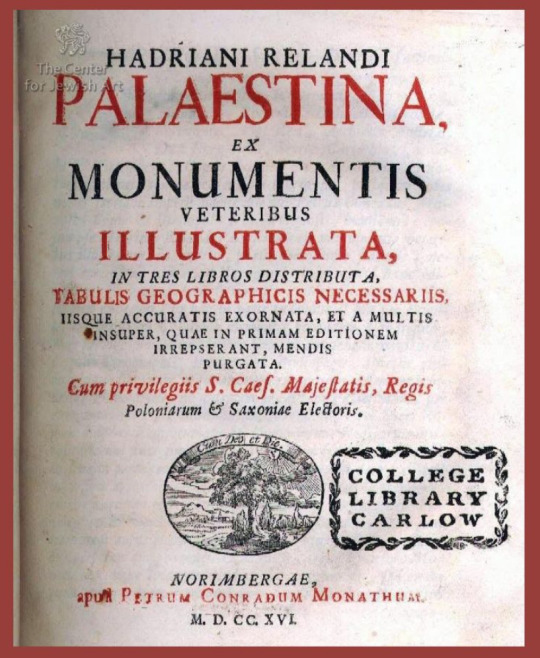
This book is written in Latin by Adriani Rilandi In 1695 describing in great detail, what was then called Palestine. He visited the entire region, ~2,500 towns, and recorded a census.
Rilandi was a geographer, cartographer, traveler, philologist, he knew several European languages, Arabic, ancient Greek, Hebrew.
Here are the primary facts & conclusions:
* The country is mainly empty, sparsely populated, the main population is Jerusalem, Akko, Tsfat, Jaffa, Tveria and Gaza.
* Most of the population were Jews. That's right. Jews. Everyone else is Christians, aside from very very few Muslims, mostly Bedouins.
* The only exception is Nablus (now Shchem), where approximately 120 people from the Muslim family Natsha and approximately 70 "shomronims" (Samaritans).
* In Nazareth, the capital of Galilee, lived approximately 700 people - all Christians.
* In Jerusalem there were about 5,000 people, almost all Jews and a few Christians.
* In 1695, everyone knew that the origin of the country was Jewish.
* There is not a single settlement in Palestine that has Arabic roots in its name.
* Most settlements have Jewish originals, and in some cases Greek or Roman Latin.
* About 550 people lived in Gaza, half of them Jews and half Christians.
Jews were successful in agriculture, especially in vineyards, olives and wheat, Christians were largely engaged in trade and transportation.
The book completely refutes theories about "Palestinian traditions", "Palestinian people" and leaves almost no link between the land and the Arabs who even stole the land's Latin name (Palestine) and took it for themselves.
And now "Free Palestine" people, remind me, please, why are you trying to free Palestine from it's original indigenous people (Jews) and give it to colonizers and occupiers?
#Palestine#Palestinian#Hamas#israel#secular-jew#jewish#judaism#israeli#jerusalem#diaspora#secular jew#secularjew#islam#Isis#boko haram#al shabab#muslim brotherhood#Akko#galilee#Jaffa#Gaza#Israelis#judea#Samaria#JUDEAN's#adrinani rinaldi
55 notes
·
View notes
Note
:/ :/ :/ A person that really hates me (like more than a normal amount) says that you are a TERF blog (as in the context of me reblogging memes about bad media takes from you as one of the reasons to hate on me) :/ When your name is LITERALLY declaring hating feminism :/ :/ :/ Like in any shape... :/ I had to hear it then so do you, it is the rule of the internet you know :/
It's very silly how the in-group insult 'TERF' (Trans-Exclusionary Radical Feminist) has widened and widened in usage until now referring to anyone in the 98% of the rest of the population that recognizes the human race is a sexually dimorphic species.
It's reduced their cliquey feminist jargon to utter nonsense, and made the people using it look even more foolish than they would otherwise, but it doesn't really bother me: the battles over gender self-identification have done more to weaken, divide and collapse the feminist movement than just about anything antifeminists have ever managed, so it's all gravy.
49 notes
·
View notes
Text
the problem with writing a fantasy loosely based on a historical culture is you need to decide how "loose" you're willing to go. like yeah i know they didn't have silk but fuck you there's a literal god sitting right the fuck there and of course he would want that shit. but also would the protagonist know what the fuck a book is?
#sorry i'm bouncing between my novel and B&D's next chapter#at least we know they had cannabis#god and his weed smoking polycule#edit: btw if anyone was curious the answer is no#i'm willing to fudge some years bc fantasy but not by the thousands that separate this time period from books as we think of them#which is annoying bc linen was also not a thing yet#or it was super expensive#so guess who needs to go change a bunch of instances of the fucking word linen#every so often im struck with the question 'wait was that a thing yet?' and it's like a 50/50 shot i need to rewrite something because of i#probs closer to 80/20 because even if it exists it exists in a much different context#like the linen thing#at least it makes some good jumping off points for learning about history#nothing like asking what sorts of dates (fruit) would have been available and in what season to send you down the rabbit hole#and find out scientists revived the extinct judean date palm with 2000 year old seeds#and the fruit tastes like honey#big fan of the fact the first one that they were able to grow was a male and they named him Methuselah
8 notes
·
View notes
Text
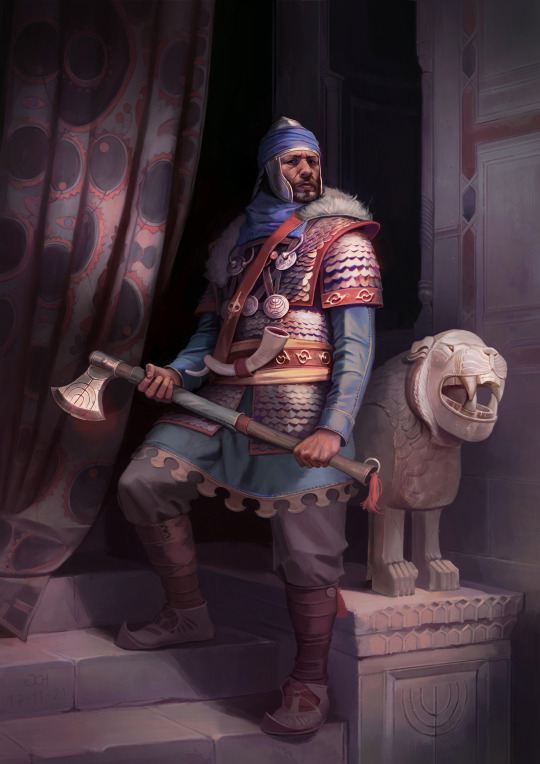
Painting I made a bit more than a year ago, a Temple Guardian from ancient Judea.
I took heavy inspiration from painter Ludwig Deutsch, a major driving force throughout the process that inspired me to set the mood and overall apparel.
Hope you like it!
Best wishes for the new year!
Joel
#Jewish#judean#warrior#armor#knight#israel#israelite#massachusetts#dungeons and dragons#rpg#board games#tabletop games#game art#fantasy painting#fantasy art#digital art#digital painting#concept art#concept design#character design#ancient history#medieval
23 notes
·
View notes
Text

4 notes
·
View notes

